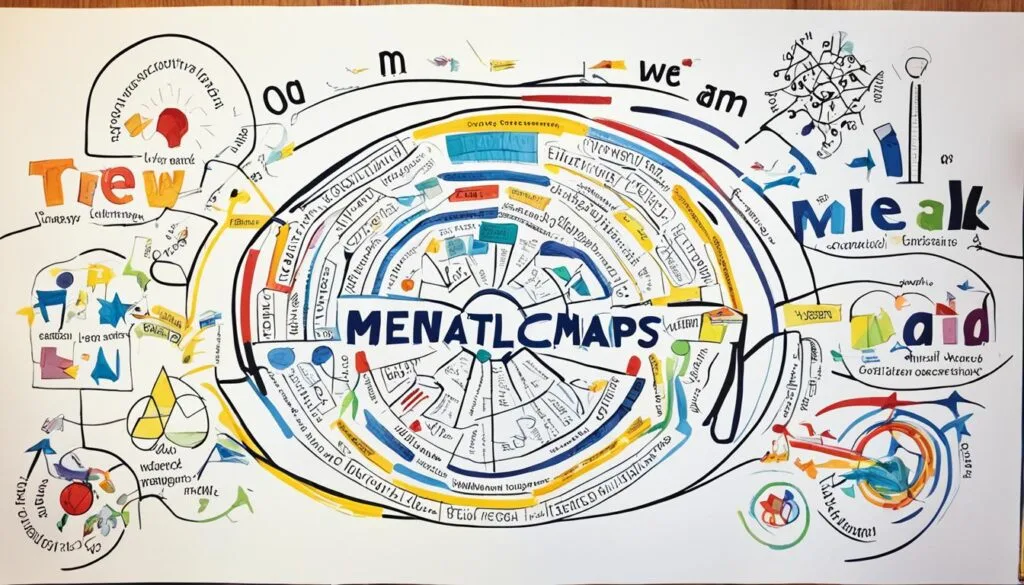Phone:
(+65)8319-0742
The fabric of Cognitive Structuring in Education weaves a tapestry of complex mental representations that enables learners to assimilate and digest new information efficiently. It’s a process that underpins student cognitive development, shaping our perceptions and informing the way we interact with knowledge. In the realm of learning techniques, experts like Peter C. Brown and Betty K. Garner discuss the significance of building these structures, which serve as mental scaffolds, bolstering our understanding and retention of new information. The integration of such educational psychology approaches into our teaching methodologies enhances the learning experience, allowing us to chart a course through the wealth of data that confronts students every day.
Key Takeaways
- Importance of cognitive structuring in understanding new concepts.
- Impact of mental representations on student learning outcomes.
- Role of educational psychology in improving learning techniques.
- How cognitive structuring fosters robust student cognitive development.
- Benefits of integrating cognitive structuring strategies in education.
Understanding the Significance of Cognitive Structures in Learning
The realm of education constantly seeks innovations in effective teaching methods, and central to this quest is the concept of cognitive skill building. When learners develop robust cognitive structures, they lay a foundation for higher learning efficiency and greater academic achievement. It’s the intricate scaffolding of mental models and structure building that enable the meaningful organization of knowledge, reflecting core learning organization principles.
At the heart of understanding new concepts lies the powerful role of mental frameworks. However, not every learner crafts and utilizes these frameworks with the same level of effectiveness. Recognizing this disparity is key to cultivating more personalized and fruitful education experiences.
The Role of Mental Frameworks in Processing Information
Mental frameworks are pivotal in the way we process information. They act as organizational tools that connect new learning experiences with our existing knowledge base. This interconnectedness is crucial for learners to assimilate information swiftly and recall it effectively. As a result, mental frameworks are instrumental in reinforcing cognitive skills, ultimately reflecting on the efficacy of teaching methods utilized in the classroom.
Differences Between High and Low Structure-Builders
The contrast between high and low structure-builders is pronounced within educational settings. High structure-builders have an innate proficiency in discerning key concepts and integrating them into coherent mental schemas. This ability not just enhances their capacity to process new information but also to retain it for the long term. Conversely, low structure-builders may find it challenging to identify and retain overarching structures within their learning process, resulting in gaps in understanding and recall. Such insights necessitate tailored teaching methods that support each learner’s cognitive development journey.
Education professionals who emphasize cognitive skill building contribute to the development of well-rounded individuals capable of critical thinking and problem-solving. When cognitive structures are nurtured through strategic structure building, learners can construct and modify mental models to navigate the complexities of various disciplines. This is foundational to the principles of a learning organization, which values the continuous growth and adaptability of its members.
To encapsulate, the significance of cognitive structures cannot be overstated; they are the invisible latticework upon which learning is built, sustained, and expanded. The cultivation of adaptive mental frameworks is a testament to the power of effective teaching methods that prioritize cognitive development as a pathway to greater educational achievement.
Cognitive Structuring in Education: How Mental Maps Shape Understanding

The intricate tapestry of education is often woven through the development of mental maps, which serve as intrinsic guides helping learners navigate through new and complex information. These mental frameworks are not only central to understanding but are also essential tools in conceptualizing and retaining knowledge. It’s through such maps that cognitive development strategies earn their merit, by enabling connections that turn disjointed data into a structured and meaningful lattice of ideas.
Educational psychology approaches emphasize the continuous interplay between students’ existing knowledge and incoming information, fostering mental maps that evolve over time. This growth directly affects how learners decode, synthesize, and apply new learnings, transforming abstract concepts into tangible skills. By examining the patterns and interrelationships within subject matter, students are capable of constructing a cognitive scaffolding that underpins deeper understanding.
Here is a look at how these mental maps can influence cognitive development:
- Enhanced Memory Retention: By establishing connections with prior knowledge, mental maps can greatly improve the retention of new information.
- Efficient Problem Solving: A well-developed mental map can expedite the process of problem-solving by providing clear pathways to solutions.
- Superior Critical Thinking: Mental maps facilitate the analysis of information, supporting critical thinking and the questioning of assumptions.
Through the utilization of strategic cognitive development strategies, educators can craft lessons that actively encourage the creation and refinement of students’ mental maps. This mindful approach can yield significant learning advancements, benefiting students across diverse educational landscapes. As we continue to explore the vast terrain of educational psychology, tailoring teaching practices to support the formation of intricate mental maps remains an invaluable pursuit in the journey of intellectual empowerment.
Strategies to Enhance Cognitive Development in Students

The landscape of education is perpetually evolving, with the quest to optimize cognitive development remaining at the forefront. A focus on implementing student learning techniques that bridge the gap between new information and prior knowledge has shown to be instrumental. Beyond the incorporation of established learning techniques, the nuances between being a rule learner or an example learner can significantly impact a student’s cognitive prowess.
Connecting New Knowledge with Prior Learning
One of the most eï¬ective student learning techniques is the deliberate connection of new concepts with an individual’s existing knowledge base. This approach serves as a mental hook, drawing on the student’s prior learning experiences to create a relational understanding of new information. It is a strategy that particularly benefits rule learners, those who thrive on understanding and applying overarching principles to various scenarios.
Pattern Recognition and Information Organization
Developing a student’s ability to recognize patterns and to organize information is another foundational aspect of bolstering cognitive structures. This skillset encourages students to become adept at parsing through data to identify significant trends and core connections. Emphasizing the role of example learners, who excel at learning from specific cases and applying those instances to broader contexts, can enrich learning experiences and compensate for the varied learning styles within a classroom.
Empowering students to thrive as both rule learners and example learners equips them with comprehensive tools for learning. These strategies not only improve cognitive development but also prepare students for lifelong learning in an ever-changing world.
| Learning Strategy | Benefit for Rule Learners | Benefit for Example Learners |
|---|---|---|
| Connection to Prior Knowledge | Facilitates understanding of new concepts | Helps relate new information to known examples |
| Pattern Recognition | Enhances the ability to structure information | Aids in applying learned patterns to new situations |
| Information Organization | Promotes efficient categorization of concepts | Improves memory retention through categorization |
Importance of Educational Psychology in Cognitive Structuring
As educational psychology continues to influence education reform, its insights into cognitive development strategies create profound effects on teaching and student learning. The science behind how learners acquire, process, and recall information can significantly tailor the educational approach, ensuring strategies are suitably aligned with cognitive needs.
Developing Cognitive Structures Through Reflective Awareness
Reflective awareness stands as a cornerstone within educational psychology approaches. Teachers who foster an environment where students actively reflect on their learning experiences contribute greatly to the development of cognitive structures. This reflective practice encourages higher-order thinking and metacognition, where students not only consume content but also consider the relevance and interconnection of new knowledge with existing schemas.
The Power of Visualization In Learning
Visualization, a powerful learning tool endorsed by cognitive science, utilizes mental imagery to enhance understanding and memory. By strengthening the ability to visualize concepts and processes, learners can abstractly engage with complex material, fostering both retention and transferability of knowledge. When incorporated into classroom practices, this skill serves as an indispensable component in the roster of cognitive development strategies.
| Strategy | Description | Benefits to Cognitive Development |
|---|---|---|
| Reflective Journals | Writing activities that prompt students to consider their learning journey and the integration of new knowledge. | Enhances metacognitive abilities and self-awareness. |
| Mind Maps | Visual representation of concepts and their connections. | Promotes organizational skills and memory retention. |
| Visual Analogies | Learning tools that relate new concepts to familiar visuals. | Facilitates quicker grasp of abstract ideas and creative thinking. |
| Simulations | Immersive scenarios mimicking real-world processes or events. | Allows experiential learning and the application of theoretical knowledge. |
In conclusion, educational psychology approaches deeply enrich education reform by highlighting and advancing effective cognitive development strategies. As educators adapt these evidence-based methods within the curriculum, students are navigated through a more engaging and fruitful educational pathway, tailored to their cognitive growth.
Educational Reforms and Teaching Methods for Cognitive Enhancement

As educational reform sweeps through institutions, the focus is instructively shifting towards incorporating cognitive structure building into curriculum design. By fostering environments where students can connect their existing knowledge with fresh information, teaching methods evolve to provide a more enriched learning experience. This shift indicates a substantial move away from rote memorization to an emphasis on effective teaching methods that promote deep understanding.
Integrating Cognitive Structure Building in Curriculum Design
The implementation of educational reforms geared towards cognitive advancement invites educators to devise strategies for incorporating cognitive structure building directly into the curricula. This holistic approach aims to move beyond mere content delivery, instilling in students the ability to create meaningful connections between new concepts and what they already know. Such integration is at the heart of an effective teaching method, as it beckons a deeper level of engagement and thought from the students, leading to greater comprehension and retention.
Employing Advanced Machine Learning to Analyze Cognitive Structures
The intersection of machine learning with educational strategies is at the forefront of a paradigm shift in educational reform. With advanced machine learning algorithms, educators can now analyze the effectiveness of cognitive structures on the learning process. This technology provides quantifiable insights into how students learn and adapt to complex concepts, guiding educators in fine-tuning curriculum design to enhance cognitive growth. Machine learning thus stands as a monumental tool in customizing and revolutionizing educational content to match the learning dynamics of individual students.
The integration of these groundbreaking educational strategies, stemming from both curriculum innovation and machine learning, heralds a visionary age of learningâone that is intimately aligned with each learner’s cognitive patterns and educational needs, offering promise for future successes in educational reform.
The Impact of Educational Neuroscience on Cognitive Structuring
Recent educational neuroscience research has targeted the influence of the STEM approach on the way students develop cognitive frameworks. A scientific nexus of disciplines within STEM enhances students’ ability to form complex cognitive structures, which is critical to their understanding of multifaceted concepts such as electrical circuits. An emerging consensus suggests that an interdisciplinary educational model can profoundly enrich learners’ cognitive capacities.
Research on the Effectiveness of STEM Approaches
Studies in educational neuroscience research consistently demonstrate that a STEM approach significantly remodels and advances the cognitive structuring process. By integrating science, technology, engineering, and mathematics into education, students engage in an enriching learning experience that promotes active cognition and problem-solving abilities.
Building Cognitive Complexity with Interdisciplinary Education
Interdisciplinary education, lying at the intersection of various fields, is endorsed by educational neuroscience research as a potent medium for the cultivation of cognitive complexity. The synthesis of these disciplines not only elucidates concepts but also broadens the scope of cognitive connections students can make.
| STEM Discipline | Skills Enhanced | Cognitive Benefits |
|---|---|---|
| Science | Inquiry, Experimentation | Enhances analytical thinking and hypothesis testing |
| Technology | Digital Literacy, Computational Thinking | Promotes problem-solving and data interpretation |
| Engineering | Design Principles, Systematic Application | Advances understanding of complex systems and processes |
| Mathematics | Quantitative Analysis, Logical Reasoning | Supports precise calculation and structured reasoning skills |
Conclusion
The journey through the land of Cognitive Structuring in Education highlights its function as an essential beacon in the realm of learning techniques, shedding light on the paths that lead students through the intricate maze of cognitive development. The consistent threads woven by mental frameworks and knowledge connection strategies, enriched by the valuable insights of educational psychology approaches, have been shown to greatly enhance effective teaching methods. By embracing these strategies, educators facilitate the construction of cognitive architectures that support complex understanding and knowledge retention.
As we delve into the fabric of educational reform, the importance of embedding cognitive structure-building practices into curriculum design emerges as a paramount step in redefining our educational landscape. This pivotal strategy not only aligns with contemporary educational mandates but also mirrors the growing evidence from educational neuroscience research. The incorporation of interdisciplinary STEM approaches further underscores the potential these methods have in cultivating a sophisticated scaffold for complex cognitive development, preparing our learners for the nuanced demands of scientific and technological innovation.
Ultimately, our exploration underscores the irreplaceable role that cognitive structuring plays within the educational system. For the future of academia and beyond, the nourishment and refinement of these strategies are crucial in forging learners who are not just equipped but are also agile in adapting to ever-evolving academic and real-world challenges. Thus, a commitment to enhancing cognitive structures is not just a pedagogical choice but an imperative for shaping a generation of thinkers, innovators, and problem-solvers.
FAQ
What is Cognitive Structuring in Education?
Cognitive Structuring in Education refers to the process by which students create mental representations or structures to organize, simplify, and understand complex real-world information. This involves learning techniques that aid in building these mental structures, contributing to student cognitive development and the ability to grasp and retain new concepts effectively.
How do mental frameworks affect information processing?
Mental frameworks serve as organizing principles that help learners assimilate new information by relating it to what they already know. These structures facilitate the processing, understanding, and recall of information, making them essential for effective learning and teaching.
What distinguishes high structure-builders from low structure-builders?
High structure-builders are adept at identifying essential concepts and information, which allows them to construct robust mental models that aid their learning process. Low structure-builders, however, often struggle to discern these structures, which can hinder their ability to integrate and remember information.
Why are mental maps important in understanding new information?
Mental maps are important because they help learners connect new knowledge to existing cognitive structures, which enhances comprehension and facilitates memory retention. They are mental frameworks that provide context and enable the application of knowledge to different situations.
How can educators enhance cognitive development in students?
Educators can enhance cognitive development by implementing strategies that encourage students to connect new knowledge with prior learning, engage in pattern recognition, and organize information effectively. Emphasizing rule learning over example memorization is also a beneficial approach.
What role does educational psychology play in cognitive structuring?
Educational psychology provides valuable insights into how learners construct cognitive structures. It highlights the importance of developing these structures through reflective awareness and visualization techniques, guiding educators as they develop curricula and learning environments that support cognitive development.
What are some educational reforms aimed at cognitive enhancement?
Educational reforms for cognitive enhancement include integrating cognitive structure-building strategies into curriculum design and employing advanced tools such as machine learning to analyze and improve students’ learning processes. These reforms focus on creating more effective teaching methods tailored to foster deeper cognitive skills.
How does educational neuroscience affect cognitive structuring?
Educational neuroscience explores how the brain learns and informs teaching methods and educational strategies that cater to cognitive structuring. Interdisciplinary approaches like STEM have been shown to enhance cognitive complexity and understanding, especially with abstract concepts like electrical circuits.
What is the relationship between STEM approaches and cognitive structuring?
STEM approaches, which integrate science, technology, engineering, and mathematics, have a significant positive impact on cognitive structuring. By facilitating interdisciplinary learning, STEM promotes the development of complex cognitive frameworks and a deeper understanding of subject matter.
Why is it important for education systems to incorporate cognitive structuring principles?
Incorporating cognitive structuring principles into education systems is important because it equips students with the skills needed to process and understand complex information efficiently. It cultivates adaptive learners who are better prepared to face academic challenges and apply their knowledge practically in various contexts.

















